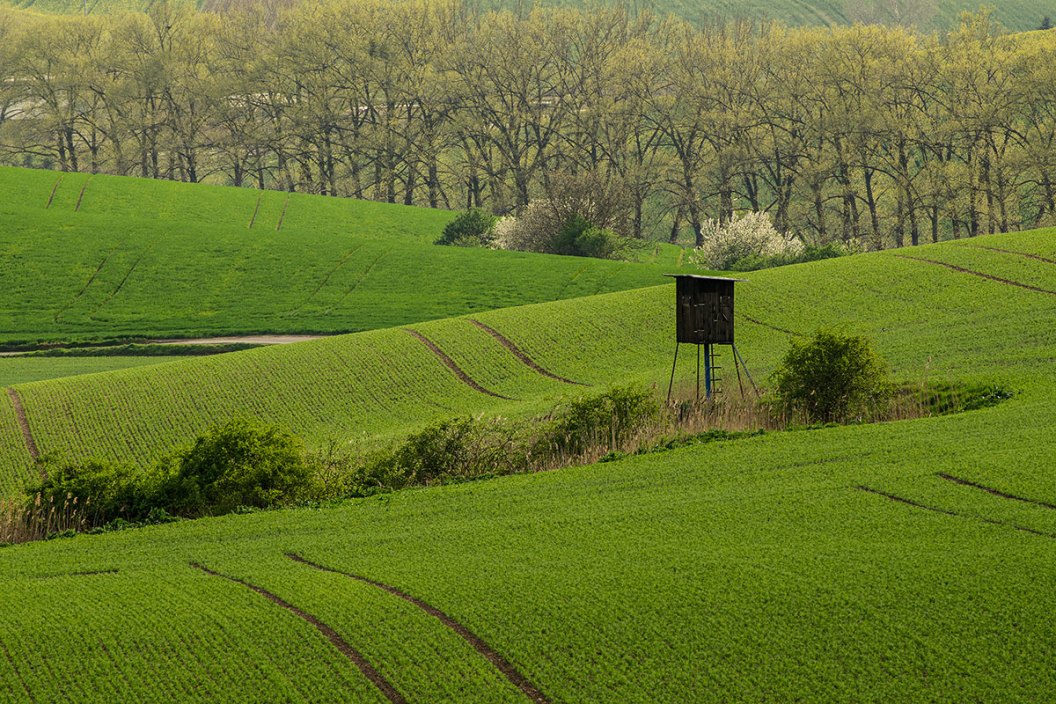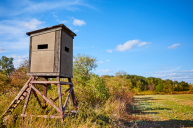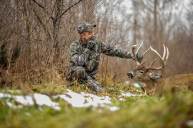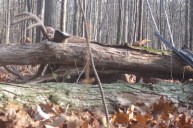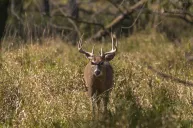Even if you only have a small piece of hunting land there are things you can do to make it hunt big.
Let's cut right to the chase. There are many things that attract deer to an area, but what we really want are the ways and means to keep them coming back and feel comfortable while they are there.
At some point, the idea of a food plot comes to our minds as a way to attract deer. It's something that will satisfy their appetite as well as their herd mentality, and hopefully they will come in numbers.
But what matters the most are the things that were and currently are still there before we hunters and our big plans ever showed up. We would like to share a few things of interest that can go a long way towards getting even a small piece of land to gather and hold deer.
The best part? Many of these things are already there.
Having a small property, let's say 40 acres or less, doesn't mean that you don't have food sources, bedding areas, or deer movement through it, it simply means that you'll need to take advantage of what it offers to turn it into a big buck magnet.
Having good hunting opportunities on your small tract can be as easy as having good stand locations, but turning it into a great hunting area will require some work.
Here are some pointers to get you started.
1. Small Property Tree Trimming
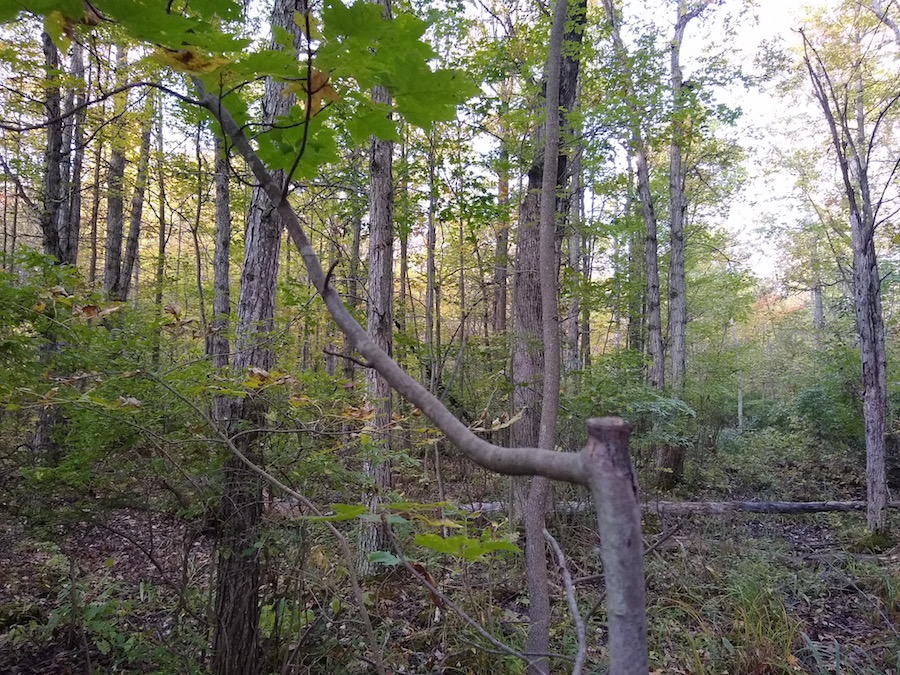
Craig Raleigh
Since you have a small parcel, it's going to be very important to get to and from your stand locations with less commotion than a hunter could get away with on a larger tract of land.
Deer, particularly mature bucks, will give you the slip before you even know what has happened no matter what size property you hunt. If given the chance, deer will settle back down and return, mainly if there are does around.
Clearing out smaller saplings and cutting overhanging limbs definitely helps. Creating some open space so that the hunter can get to a stand or a ground blind site without getting snagged or bumping into anything is paramount.
Any good piece of land can be made into better hunting land by thinning some trees in the effort to create more sunlight penetration, giving the mast trees such as oaks a better chance to be successful against competing trees.
For those that do not like the idea of cutting down saplings, there is another method, albeit somewhat controversial as well: hinge cutting. This simply means cutting most of the way through the trunk of smaller green trees and knocking them over, but not killing them completely. This way they will continue to grow shoots and even provide some new browse for deer, producing a great spot for a stand.
Another thought is to clear areas of the forest floor from dead leaves and other clutter that can crack, snap, and otherwise ruin your walk in. This may seem like a daunting task, but with a smaller piece of property, you may only need to clear areas that are direct routes to your treestand.
By simply taking a rake with you, paths can be cleared in no time. Aim for removing leaf litter and fallen twigs, and it will be far easier to travel through your pathways as the season goes on.
This sort of ground clutter clearing can be done in the pre-season, but sometimes the bigger stuff is better left to the post season. You'll certainly feel more at ease working when the disturbance that you create is not done right before hunting season, giving deer ample opportunity to return to the area.
Once the season is getting close, it will be much more simple to go out and maintain rather than starting the entire process anew.
2. Take Care of the Mast Trees
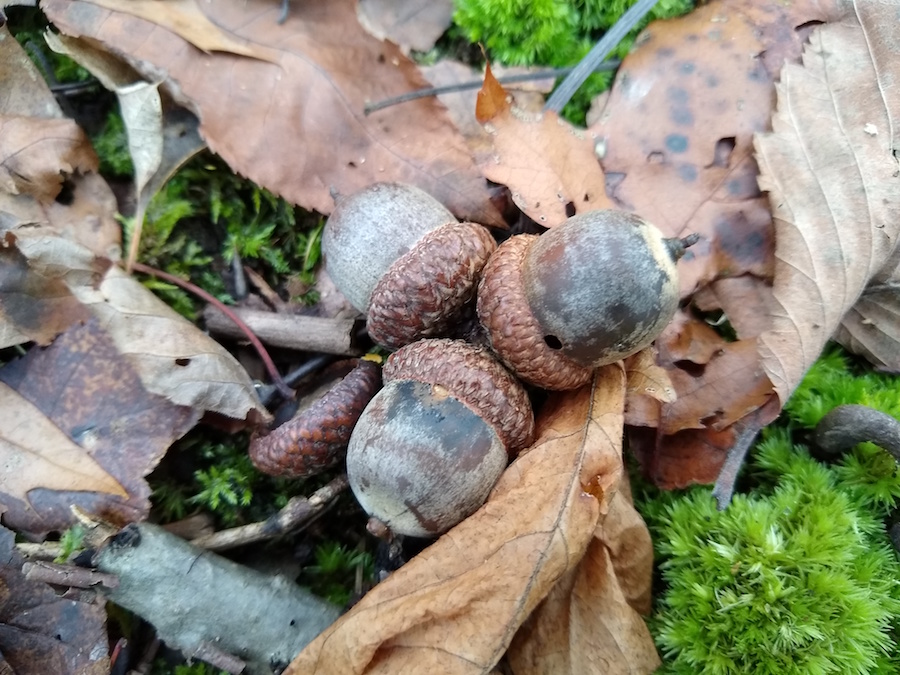
Craig Raleigh
For those of you that have a small hunting property with oaks, beech trees, or hickory trees, there are some simple ways to make them more fruitful (no pun intended). One of the simplest things that I learned many years ago was to find the main drip branches on these trees and pound some plant fertilizer spikes in the ground under them.
It's easy to find some spikes that work well with certain trees, even evergreens, and give them that boost they need every spring. Read the instructions well to see what the manufacturer has to say about how much a tree needs, particularly pertaining to its size. Too much fertilizer can "burn" the root system of young trees and can be detrimental to their growth.
Most manufacturers of tree spikes say to use them in the spring and then again in the fall for the best effect. My method has always been to do it in the late fall only, long after the leaves are gone and the sap is in the root system. These are, after all, "wild" trees that grew there for a reason on their own due to the soil conditions that created their parent trees many years before them, not some landscape trees in the park or your yard.
We can create a better environment for them, but too much of a good thing can have an adverse effect as well.
Also, pruning trees can be another way to encourage good growth and consistent food production. Be smart about it, and read up on good tree care for specific tree species if needed.
Oaks particularly don't need much pruning, except for the branches that might be in the way of your arrow or bullet! Removing obvious dead limbs that can be safely reached helps and can even provide some good firewood for those that use a wood stove.
3. Fruit Trees Matter
Speaking of trees, having some that bear fruit can be one of the best things to have on your deer hunting land. In fact, common belief says that deer love to eat nuts and grains, but they absolutely adore fruits, which are right on the top of their list.
In some areas wild thorn apple, prickly pear, and even persimmon can provide deer with such a viable snack. Perhaps the best part is watching the does bring the year's new fawns to it.
And where the does are, the bucks aren't far behind.
Depending on your budget and how far you would like to take your hunting land, it's not out of the question to consider planting some of your area's common fruit trees, like apple or pear. Since food plots are so common nowadays, a small plot of trees shouldn't be out of the question either. We're not talking about an orchard here, just a few trees that in time will begin to grow fruit.
Tree tubes or tree wraps are a must so that the deer won't blindly browse them out of existence. They will have to fight other animals like red squirrels for the fruit, but in a few short years you may really have something. Don't discount vine plants like blackberry or raspberry, which grow fantastically in the wild and also attract all kinds of wildlife to your property.
4. Deer Like Nasty Cover
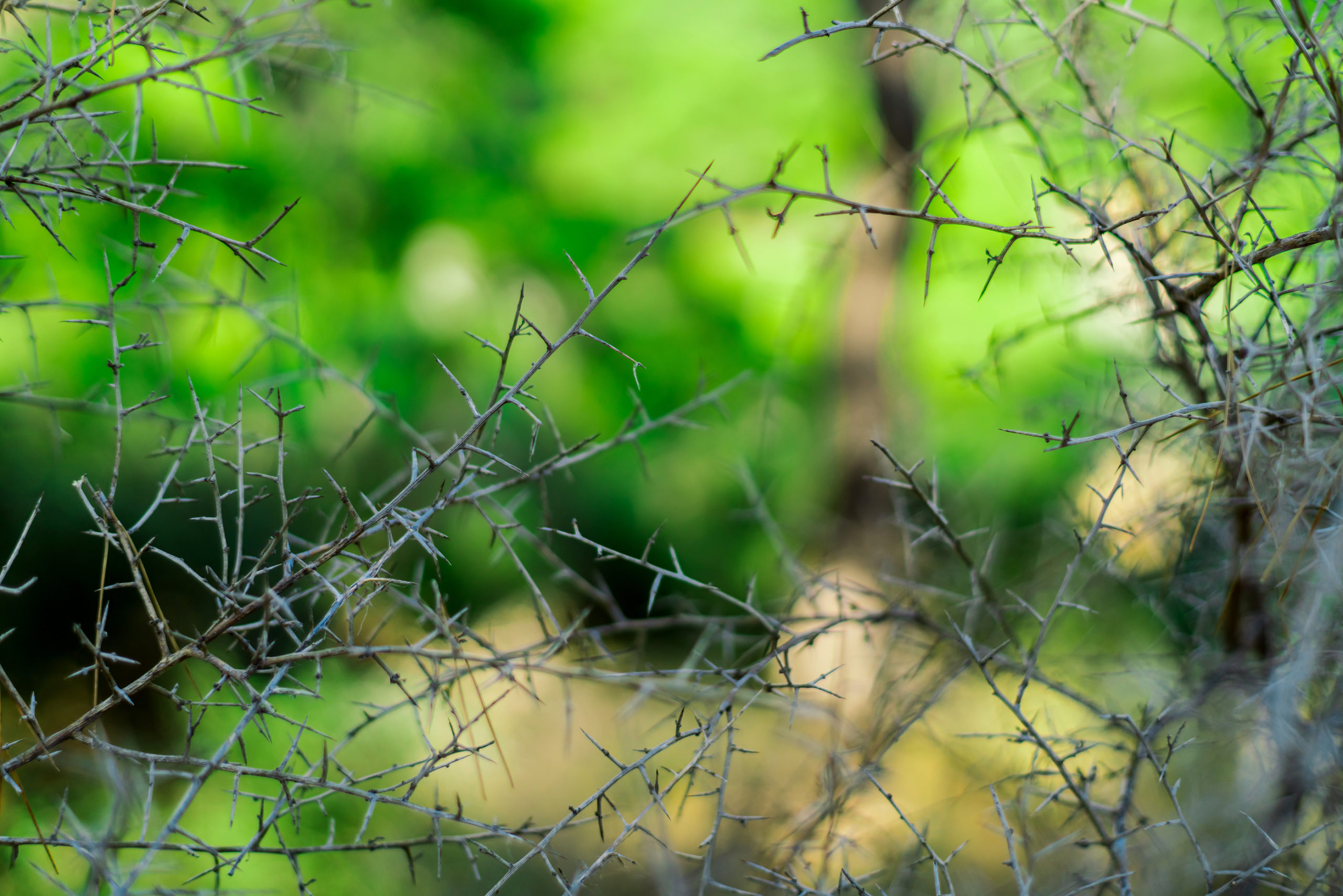
Planting or keeping things like the aforementioned raspberry and blackberry can not only attract deer, but keep them feeling safe due to the thickness of the vines. Not only that, but those things that make it so hard for us to penetrate the cover on a property (like thorny bramble) are what deer use to make their living.
Areas that are darn near impossible for you and I to penetrate are but a highway for whitetail deer. Instead of cutting it away to create easy movement for yourself, consider cutting away some of the vegetation around it, particularly to give deer a way to use the wind direction to their advantage and give them a way to escape.
Wait, let them escape?
If whitetail deer cannot easily escape an area they aren't going to spend much time there. Areas of bramble with a slope that they can see down with the prevailing winds at their back will give a resting mature buck exactly what he needs to feel comfortable.
This type of cover can even be created by using all the leftovers you've been trimming. Since you've built this hideout yourself, you'll know exactly where it is and how to approach it.
Add in some spying trail cameras and you'll be able to quickly learn the routes that the bucks are using as they head to it in the morning or leave in the afternoon. These are your prime stand sites.
5. Small Property Staging Areas
Staging areas are where the socially active whitetail deer likes to gather to start their day. It's usually a comfortable area where deer can settle in and see each other. And gathering is advantageous for them, because Lord knows we've been busted by all those eyes, ears, and noses in one spot!
Interestingly, this may be best used on a small piece of hunting land as an off-limits zone. In other words, a staging area is not so much a spot that you want to set up over, but an area that allows deer to settle down and feel safe on your property. This is important since your small property needs some space to breathe, even during the times you are trying to hunt it.
Here is where wind direction and human activity play key roles. Hunting a stand with the wind heading towards a staging area will defeat the purpose. By adding or enhancing a staging area between the nasty cover and areas where you want to place your treestand, you'll be going about it a better way. Older bucks will feel comfortable hanging out there and even approach these spots in the daylight hours.
6. Rocks and Minerals
Mineral supplements like these are almost exclusively manmade. According to the QDMA, "Studies have shown that calcium and phosphorus are by far the two most common minerals in deer antlers, comprising 30-35 percent of the mature antler by weight." In addition to those two elements, the next most common were magnesium and sodium.
As long as they're legal to use, minerals can go a long way in creating solid antler growth in bucks, but they also attract deer to your property. Since not all states allow the use of placed mineral sites (or "licks" as some call them), you should research the rules in your area. For those who can pull it off, creating a mineral lick can be a satisfying way to bring deer onto your land and keep them there.
Minerals can be added as a supplement to feed (again, where legal) as a block placed on the ground or in some cases a tree stump, or as a granular mix that is added directly to the soil.
For those with smaller tracts of land, even water sources can come into play. Digging a pond or diverting water can be quite costly or against local building codes. But you can always find less expensive ways that are within regulations.
A good investment in real estate doesn't have to mean breaking the bank or breaking the law. It's just that having a piece of property comes with some amount of work to make it into a great hunting area.
There are lots of things you can do to make your small hunting tract better, but which ones make the most sense for you? Part of the fun is figuring that out, and then putting a plan into place.
Looking for a little more or even hot lunch for your hunting blind? Follow my webpage, or on Facebook and Twitter.
NEXT: HUNTER'S MOON: WHAT THE TERM MEANS AND WHERE IT ORIGINATED
WATCH
